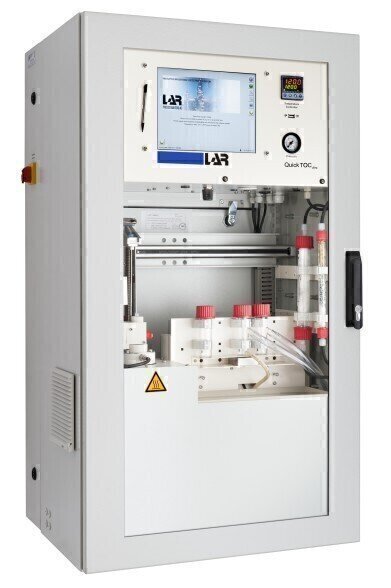-
 QuickTOCultra
QuickTOCultra
Measurement and Testing
TRUE TOC or Some Organic Carbon? Do you know the difference?
Jun 18 2014
The TOC (Total Organic Carbon) is one of the most important composite parameters in the assessment of the organic pollution of water. In general, the TOC is determined by oxidising a homogenised water sample including all particles. The produced CO2 is detected and defined quantitatively resulting in the TOC. However, not all existing methods succeed in the complete oxidation of a sample ending up with a result that is not the TOC but only Some Organic Carbon. Common methods like thermal-catalytic oxidations or wet chemical oxidations cannot ensure the complete oxidation of the raw sample. Their oxidation potential is too low and requires the use of catalysts to improve it. However, catalysts may change and become inactive resulting in analytical inaccuracy. It is proved, however, that complex carbon compounds require a temperature of at least 1,150°C to be cracked. Furthermore, even if the oxidation potential would be high enough, the analysers' process operation often requires sample pre-treatments such as dilution or filtration in order to prevent any blockages and clogging of the reactor and tubes. However, this ends up in analytical inaccuracy making the results disputable. Additionally, due to the measurement method used which often is the so called TOC-direct-method the volatile and purgeable organic carbon (VOC, POC) escape when stripping out the total inorganic carbon (TIC) in the first step. This method is also called the NPOC-method (Non Purgeable Organic Carbon) as it is only suitable for applications with negligibly low or no VOC and POC. One or another, this method cannot determine the total organic carbon.
TRUE TOC, however, describes the total amount of particulate, purgeable, and dissolved organic carbons (DOC) present in water. Being the specialist for online TOC measurements, LAR knows the difference between some organic carbon and the true TOC of the sample. Firstly, the LAR Ultra High Temperature Oxidation at 1,200°C guarantees complete oxidation of all carbon compounds. Secondly, we do not pre-treat the sample. Within the sealed process operation it is injected directly into the inert reactor including particulates, DOC, VOC, and POC. Using the TOC-by-difference method, where in the first step the total carbon (TC) is measured and afterwards the TIC is stripped out, we ensure for the second time that the result shows the TRUE TOC of the sample.
These differences between LAR analysers and common methods are significant for the reliable monitoring of TOC and bring huge advantages for the operators. In many industries all over the world LAR online TOC analysers monitor accurately all kinds of water: from the most complex process and waste water through steam condensate and boiler feed water to ultra pure water for pharmaceuticals (HPW, WFI). With LAR online analysers, operators reliably detect any product spills and optimise their process control.
Digital Edition
PIN 25.1 Feb/March
March 2024
In This Edition Safety - The technology behind the ION Science Tiger XT - Safety with ammonia and LOHCs as hydrogen carriers Analytical Instrumentation - Discussion on new tribology te...
View all digital editions
Events
May 03 2024 Seoul, South Korea
May 05 2024 Seville, Spain
May 06 2024 Riyadh, Saudi Arabia
May 06 2024 Houston, Tx, USA
May 06 2024 Houston, Tx, USA

















